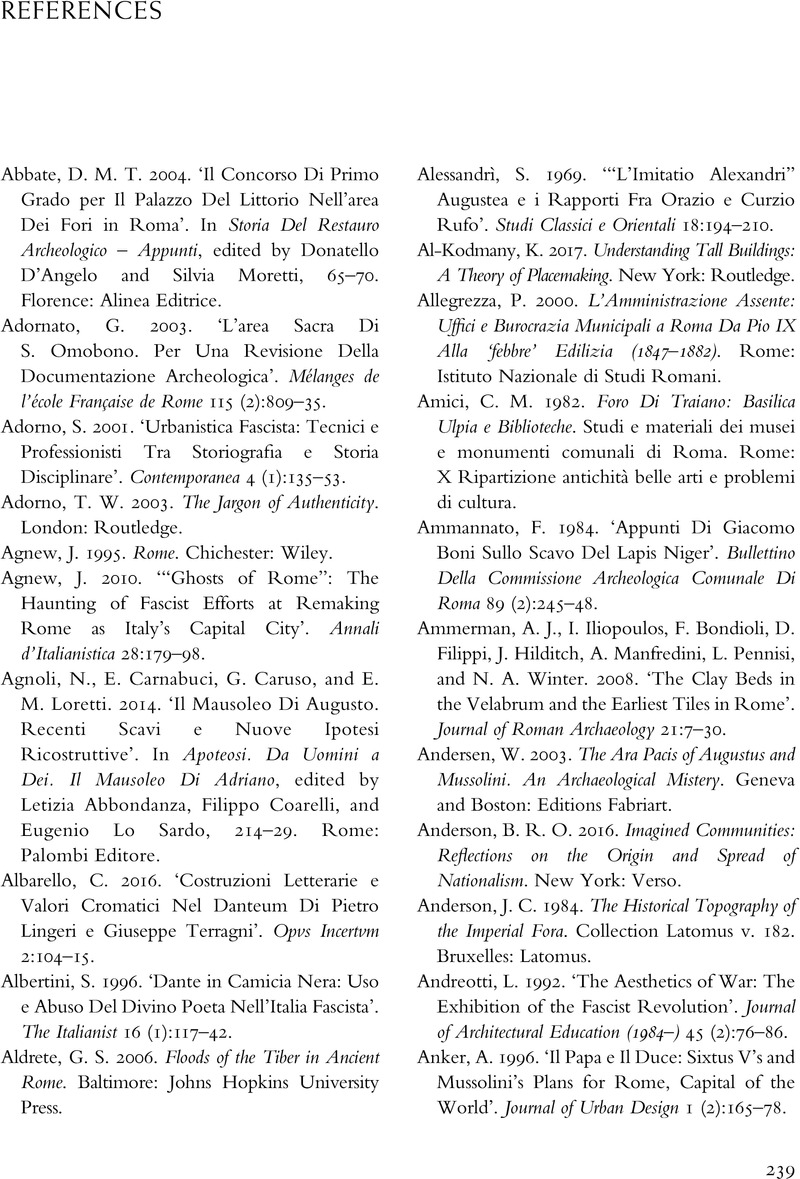 Ancient Rome and the Modern Italian State
Ancient Rome and the Modern Italian State Book contents
- Ancient Rome and the Modern Italian State
- Ancient Rome and the Modern Italian State
- Copyright page
- Dedication
- Contents
- Figures
- Preface
- Acknowledgements
- Structure of the Book
- Chapter One Placemaking
- Chapter Two Ideological Placemaking
- Chapter Three Post-Unification Placemaking (1870–1922)
- Chapter Four Reclaiming Historical Identities of Four Classical Monuments
- Chapter Five The Fascist Placemaking of Four Classical Monuments (1922–1945)
- Chapter Six The Fascist Ideological Placemaking
- Chapter Seven Afterword
- References
- Index
- References
References
Published online by Cambridge University Press: 11 July 2023
- Ancient Rome and the Modern Italian State
- Ancient Rome and the Modern Italian State
- Copyright page
- Dedication
- Contents
- Figures
- Preface
- Acknowledgements
- Structure of the Book
- Chapter One Placemaking
- Chapter Two Ideological Placemaking
- Chapter Three Post-Unification Placemaking (1870–1922)
- Chapter Four Reclaiming Historical Identities of Four Classical Monuments
- Chapter Five The Fascist Placemaking of Four Classical Monuments (1922–1945)
- Chapter Six The Fascist Ideological Placemaking
- Chapter Seven Afterword
- References
- Index
- References
Summary

- Type
- Chapter
- Information
- Ancient Rome and the Modern Italian StateIdeological Placemaking, Archaeology, and Architecture, 1870–1945, pp. 239 - 268Publisher: Cambridge University PressPrint publication year: 2023


